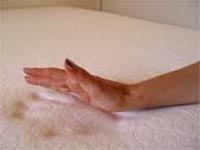
Engineers build world's smallest, fastest nanomotor
Researchers at the Cockrell School of Engineering at The University of Texas at Austin have built the smallest, fastest and longest-running tiny synthetic motor to date. The team's nanomotor is an i ... more
|  |

Rounding up the BCATs on the ISS
Although it may not be herding cats exactly, all the NASA-supported Binary Colloidal Alloy Tests (BCAT) studies have ended on the International Space Station, and the experimental samples are being ... more
|  |

 UK's Royal Society of top scientists mulls call to oust Elon Musk
UK's Royal Society of top scientists mulls call to oust Elon Musk

 Europe's Ariane 6 rocket launch postponed due to 'anomaly'
Europe's Ariane 6 rocket launch postponed due to 'anomaly'

 SpaceX deploys a batch of 21 Starlink satellites into low-Earth orbit
SpaceX deploys a batch of 21 Starlink satellites into low-Earth orbit

|  |

Nanoscale heat flow predictions
Physicists are now designing novel materials with physical properties tailored to meet specific energy consumption needs. Before these so-called materials-by-design can be applied, it is essential t ... more
|

Organism that transmits added letters in DNA alphabet created
Scientists at The Scripps Research Institute (TSRI) have engineered a bacterium whose genetic material includes an added pair of DNA "letters," or bases, not found in nature. The cells of this uniqu ... more
|  |

Harnessing Magnetic Vortices for Making Nanoscale Antennas
Scientists at the U.S. Department of Energy's Brookhaven National Laboratory are seeking ways to synchronize the magnetic spins in nanoscale devices to build tiny yet more powerful signal-generating ... more
|
 |

New method for measuring the temperature of nanoscale objects discovered
Temperature measurements in our daily life are typically performed by bringing a thermometer in contact with the object to be measured. However, measuring the temperature of nanoscale objects is a m ... more
|  |

Fluorescent hybrid material changes colour according to the direction of the light
The UPV/EHU's Molecular Spectroscopy Group, in collaboration with the Institute of Catalysis and Petroleum Chemistry of the CSIC (Spanish National Research Council), has developed a highly fluoresce ... more
|
 Nano world: Where towers construct themselves
Nano world: Where towers construct themselves





 Pentagon orders Russian cyber offensive 'stand down'
Pentagon orders Russian cyber offensive 'stand down' European leaders back Zelensky in London summit after heated Trump meeting
European leaders back Zelensky in London summit after heated Trump meeting German govt hopefuls planning billions for defence spending: report
German govt hopefuls planning billions for defence spending: report